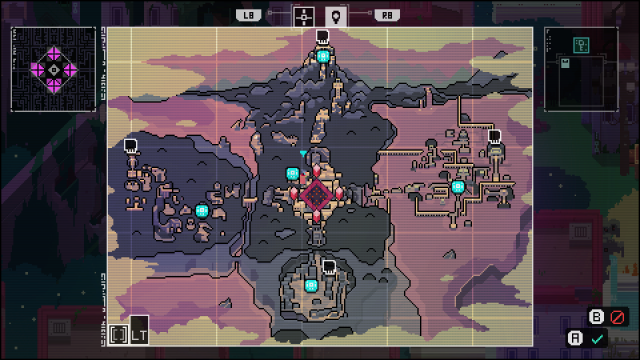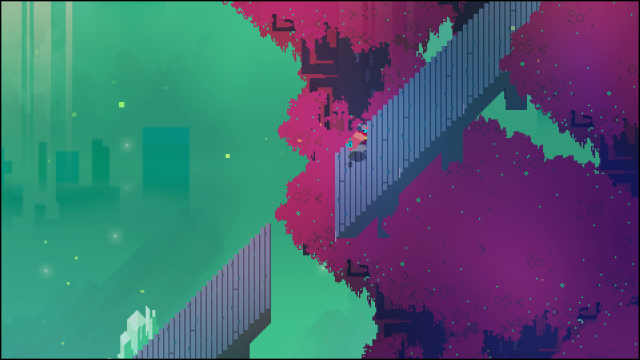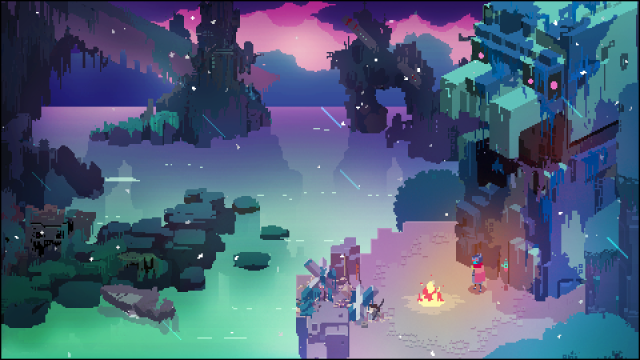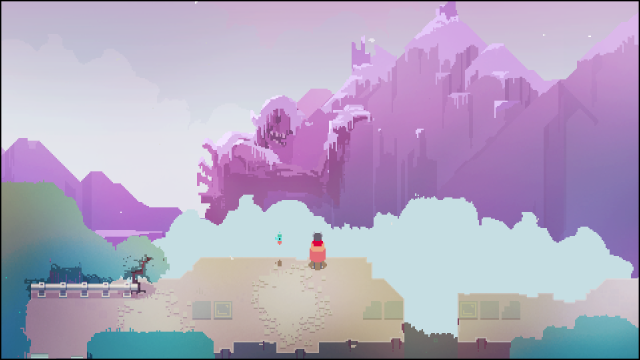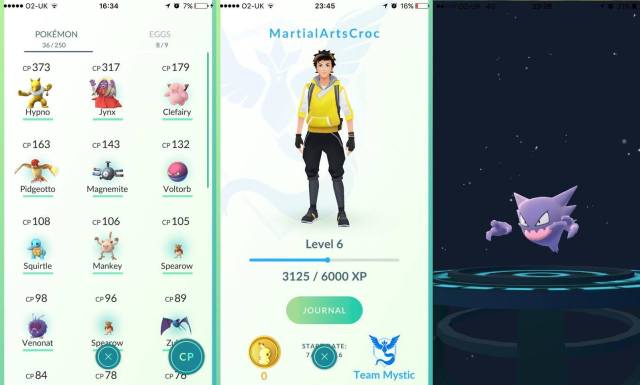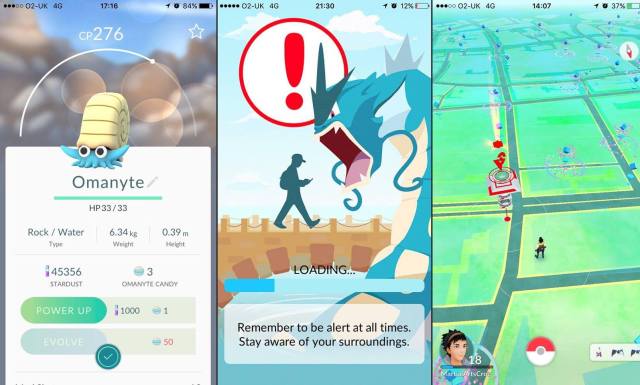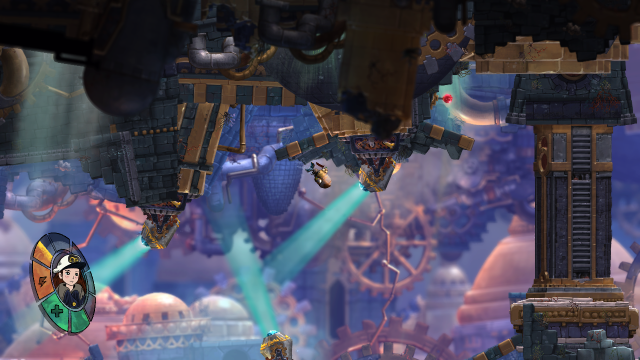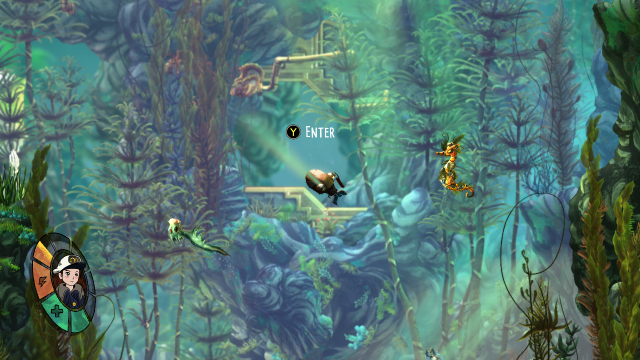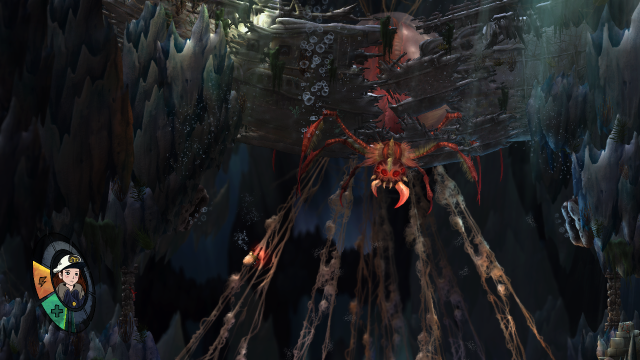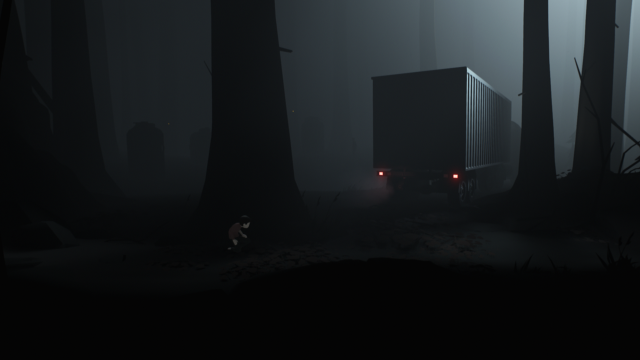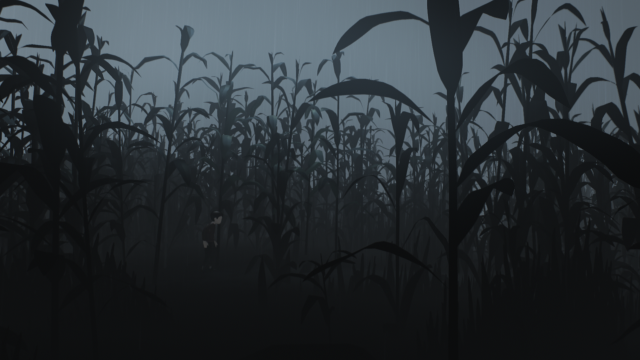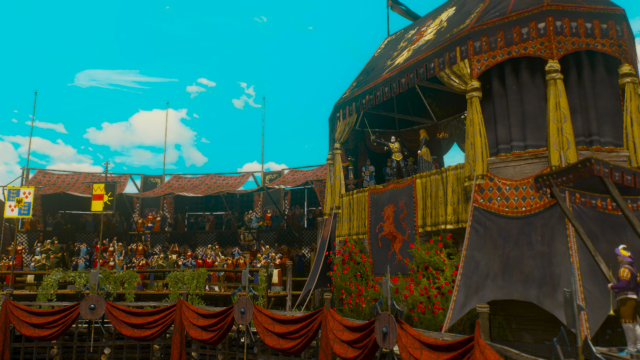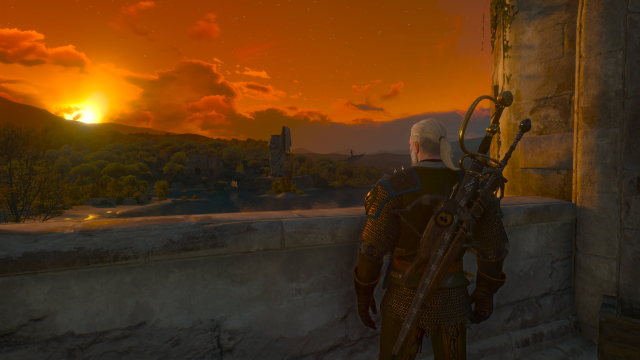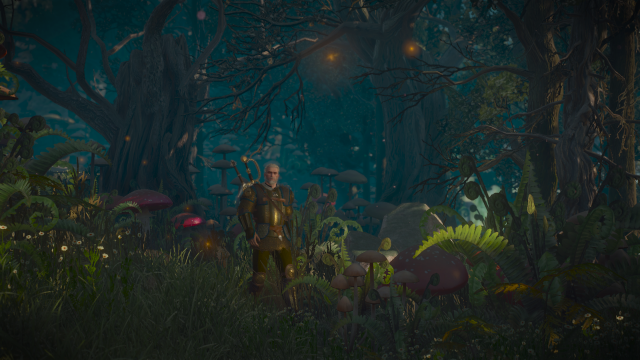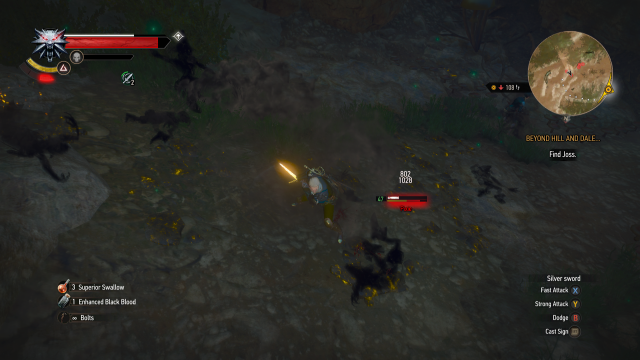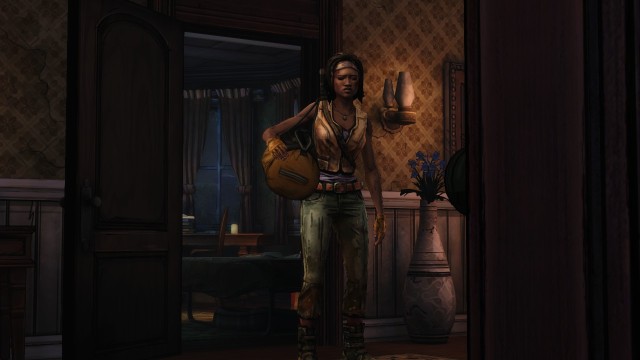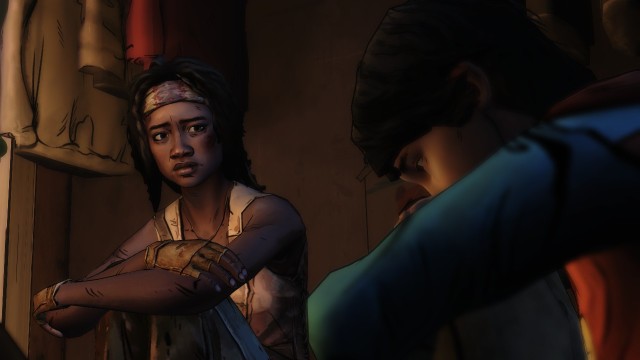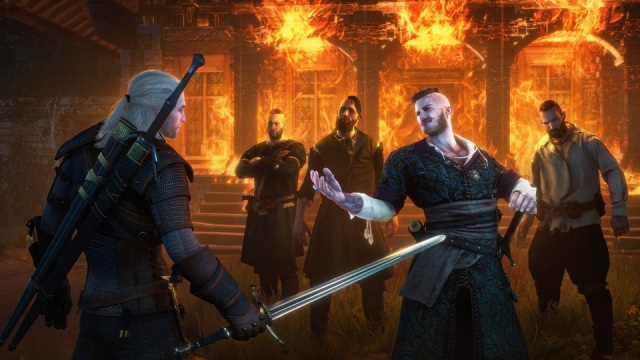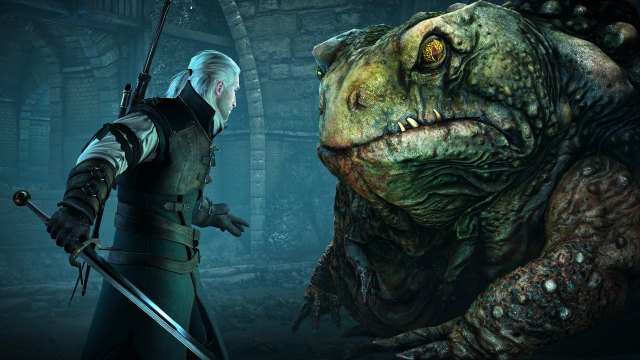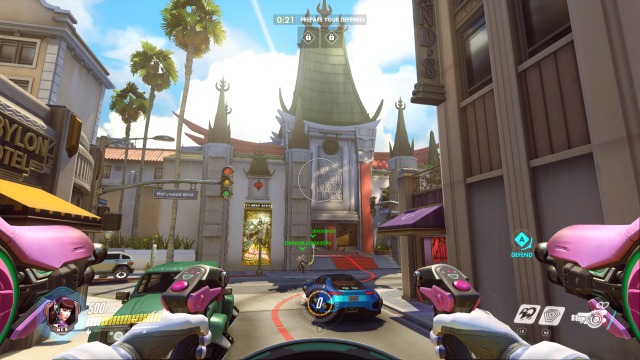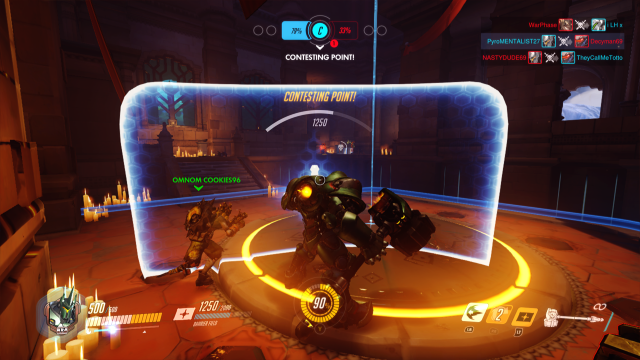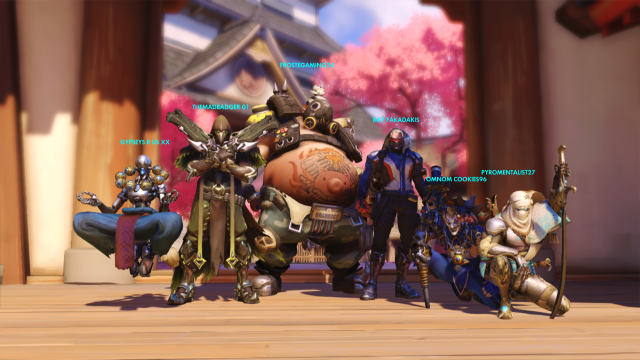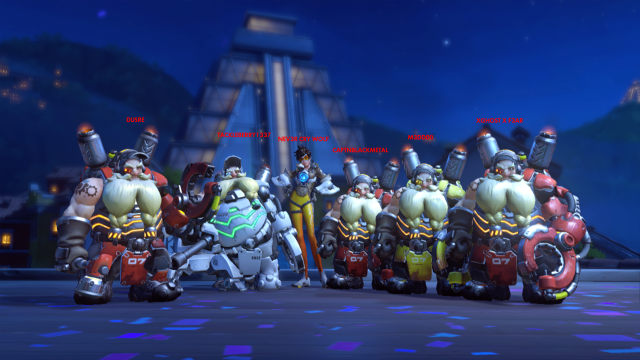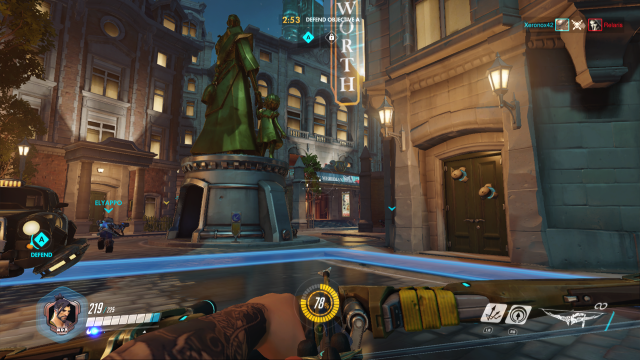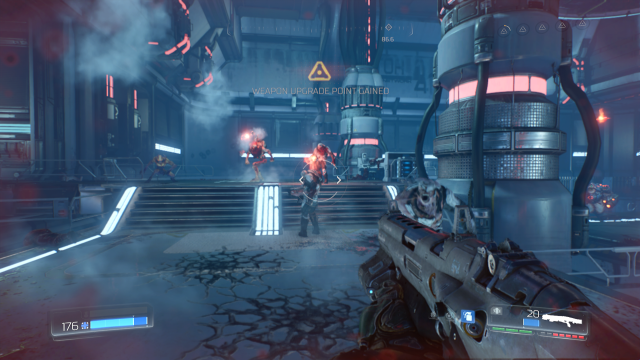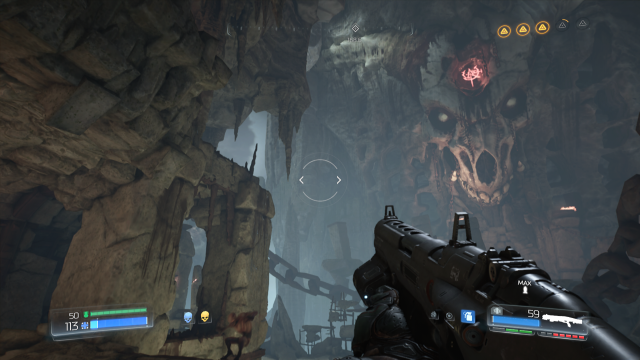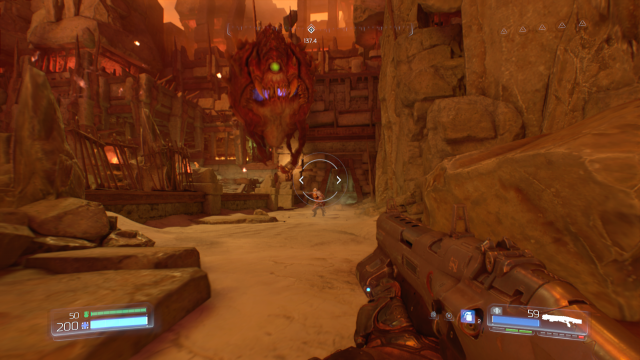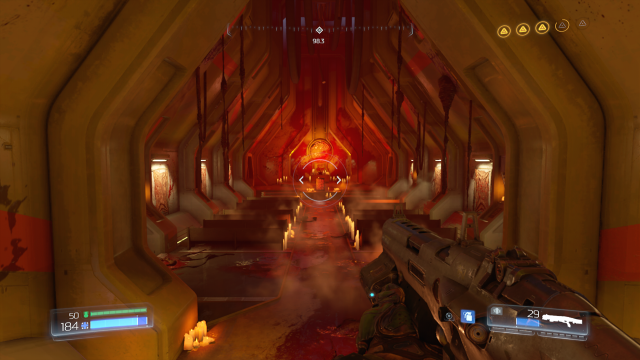Mirror’s Edge always felt like a peculiar experiment that was surprised at its own existence. Back in 2007 the increasing prevalence of AAA open-world games and the upcoming Assassin’s Creed had placed parkour at the forefront of the conversation. Worlds were becoming more explorable, and the tactile promise of clambering all over it was increasingly enticing. Perhaps even more enchanting was the premise of Mirror’s Edge– controlling expert free-runner Faith from her perspective, to many the game felt like a tantalising glimpse into the future of engaging navigation as an immersive line between player and world. Did it actually rock the world? No. But it remains a cult classic because it dared to be different.
Mirror’s Edge Catalyst is a reboot of the series-of-one that aims to inject more backstory and character into Faith and her world, the city of Glass. At the start of the game Faith’s been in prison for two years for reasons that a loading screen tip tells me are covered in a companion comic. Once out she’s immediately whisked away from the state-mandated prisoner release program by her old friends, the Runners. Glass is a city obsessed with jobs and status while Runners are neutral not-quite-rebels skirting on the edges of the law to live on rooftops free of the caste system. It doesn’t take long for Faith to become embroiled in a war between the Runners, Kruger-Sec (the private security/ law-enforcement arm of the ruling Conglomerate), and terrorist group Black November.
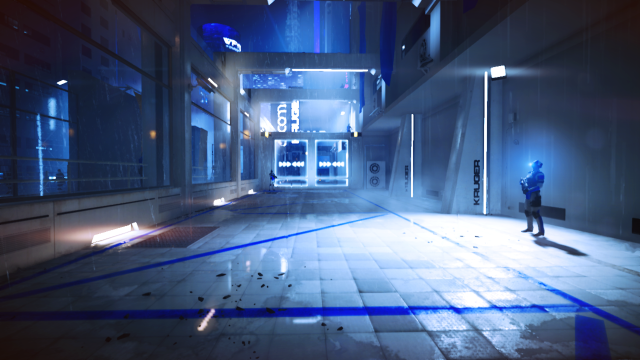
As a Runner, your gameplay loop mainly revolves around getting from A to B in as fast and smooth-a manner as possible. On the Xbox One controller once you’re running, a press of LB corresponds to “upwards” motions like jumping, running along a wall and mantling ledges. Correspondingly LT involves descending movements- sliding under obstacles, dropping off ledges, and landing into a roll to maintain your Momentum- an important mechanic that I’ll get back to. RB swings you around 180° for speedy heel-turn or faces you away from whatever wall you’re running up/across to leap onto handy ledges. Early on you unlock a MAG Rope, which is for all intents and purposes a grappling hook to swing from, zoom up to, and pull down predetermined spots in the environment.
As in the original game, Catalyst’s parkour features highlighted objects along your path to indicate your suggested route- so vault-able ledges, ramps, swing bars, and other items of interest are emphasised in red. This time there’s even a red trail to help guide you along your path- this is called Runner’s Vision, ostensibly an overlay in Faith’s contact lens implants. This interface doesn’t always suggest the quickest route, so there’s merit to exploration, and players that don’t want their hand held can customise the system to their pleasing.
Aside from environmental obstacles, you’ll also encounter K-Sec security in your forays across Glass. There’s only a handful of enemy variants- baton wielders, gun toters, shock gloves, and armoured-yet-mobile heavy hitters. Combat has been given an overhaul, with more options for clashing with enemies head-on or zipping past them altogether. You can no longer disarm and steal bad guys’ guns. You’ve access to light attacks as well as heavy attacks that can push enemies in a desired direction: careening over ledges, stumbling over each other, or simply aside and out of your way. You can pair attacks with traversal, too- a light attack from a wall run, slide, or dropping from above will knock them aside allowing you to continue on your merry way almost unabated. Heavy attacks in this context will simply deal more damage, but it feels as satisfying to land a meaty foot-to-the-face as it does to maintain your run.
It’s in the mixing of traversal and open combat that Momentum becomes important. As you run, roll, soar and otherwise clamber across the world at speed, you build up a white bar next to your health that represents momentum. This is effectively a shield for enemy fire, explained in-world as you moving just quickly enough that you’re narrowly avoiding being shot to death. This makes brushing past a number of enemies much more possible and satisfying, and lessens the blow of enemy presence to that all-important flow of movement that characterises the game.
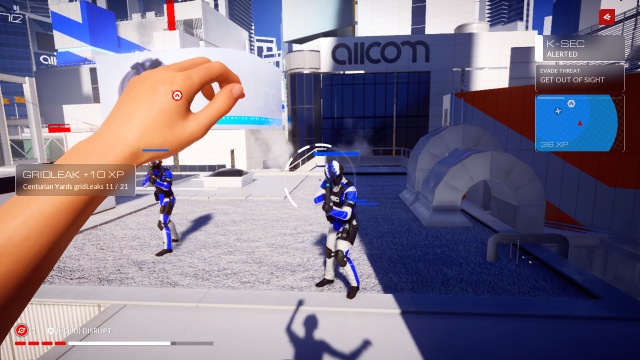
Sadly there are a handful of sections that force you to eliminate all enemies in an area, and those encounters are by far the game’s weakest points. It’s fun to take on a couple of guys- it’ll never stop being funny to me how they stumble like baby deer and collapse when you manage to smack one hapless soldier into his hapless friend- but a whole platoon of armed bastards really highlights that this game was not tuned for extended periods of combat. Most gallingly, two of the game’s biggest fights happen in exactly the same arena. It’s much more fun when the level design takes on a “run the gauntlet”-style path, as you seamlessly dispatch the odd soldier on the way to your objective.
Catalyst now has an open-world structure, and it’s taken somewhat of a Ubisoft-esque approach. Aside from collectable “Gridleaks” (floating globs of data in the air, I guess?), audio logs and the like, there are plenty of side missions that task you with traversing paths in the city within a set time period. Quizzically the courier missions, called Fragile Deliveries, are simply time trials. You’d think from the name that you’d have to maintain your momentum without suffering a harsh fall to protect your package, yet it’s simply an A-to-B time trial where your package “breaks” if time runs out. What’s also frustrating about these missions is the fact that the suggested path was almost never quick enough to actually get me there on time, leading to a frankly annoying amount of trial-and-error before finding a successful run. I eventually just gave up on all side content to chase the main story after I found out that a particular Fragile Delivery was only doable within the time limit if you’d unlocked the MAG Rope, something I was a mission or two away from achieving. Why would you make that side mission available to players that hadn’t earned that gadget yet? What you’d done, Catalyst, is waste my time. There are community-made races scattered around the place, too, but burning out on side content left me with no interest in pursuing them.
There’s also a levelling-up system now. There are three skill trees- Movement (11 of the 18 or so nodes are bizarrely unlocked at the start of the game), Combat, and Gadgets. In most games you get a sense of progression from levelling, but in Catalyst it just feels like just another check-list that arbitrarily limits your ability to maintain pace in a game all about momentum. The noise that triggers when you unlock a node is very good, though, so it’s got that going for it.
And so we get to the story missions. You’re given a bunch of pretty varied environments to throw yourself around, both across the rooftops and delving into large corporate buildings (although I would like to take a moment to point out that for a city obsessed with hard work to earn your keep, there’s an awful lot of empty offices in daylight hours). Glass itself is undoubtedly the biggest star of the game, and no matter what structural issues the Catalyst has you can’t fault the visual and physical design of the place with its gleaming towers and bright neon hues. Catalyst is a pretty great looking game, however that’s a compliment that comes with a massive caveat- on the Xbox One, there’s a slight but noticeable blur on anything more than 10 metres or so away from you. This is probably a tweak to reduce the graphical load but sometimes this blur can transfer to characters a metre away from you, which is quite terrifying to behold.
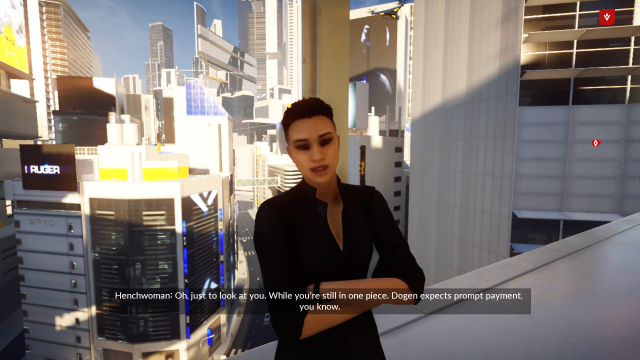
Aside from the addition of the MAG Rope and redesigned combat mechanics, there’s not much to Catalyst’s story missions aside from providing pretty places for you to experiment running though. Ninety percent of the time you’re simply working to get through an area, with the occasional aforementioned ill-advised combat-heavy encounter. The environments are varied enough in layout and flavour that you shouldn’t get too bored, but there’s a constant smattering of annoyances that hamper the experience.
The checkpointing system, for one, can be downright insulting. Sometimes I’d be a few minutes into a heated escape sequence before succumbing to enemy fire or miss a jump and plunge to my death. Often this led to the game reloading me to the exact point of failure, but without any enemies to be seen. This really cheapened the sense of danger that had been well-earned before one tiny mistake, and felt awfully patronising. A number of times I’d die and reload to precisely the spot I’d died, free to try again with a condescending pat on the head. Once or twice I was even teleported forwards, skipping out on a missed jump altogether. Those moments really hollowed the experience in breaking in cohesive flow of narrative. “How did you get out, Faith?” “Well, I fell down a hole, passed out, woke up and everyone had magically disappeared!”
But even that’s better than one time when I was tasked with running through an area that was collapsing beneath my feet. I died in the middle of that segment and kept being reloaded to the same spot with scant fractions of a second to gain my bearings and aim a jump properly. I had to reload that moment five times before I spotted the correct course of action, trading 30 seconds of loading time for three seconds of play each time.
Then there’s the fact that every objective in the game centres around traversal. Now, a great movement system can form a solid backbone for a game- just look at Spider-Man 2 or Crackdown. Mirror’s Edge certainly has a movement control scheme that’s inherently satisfying to get stuck into. But Catalyst’s problem is that that’s the whole game- races, deliveries, Grid Nodes, and story missions alike are entirely centred around speed and navigation with the most minor tweaks to the context for your actions. Your enjoyment and value gained from this game is likely to simply correlate with how long the game’s core systems can keep you entertained.
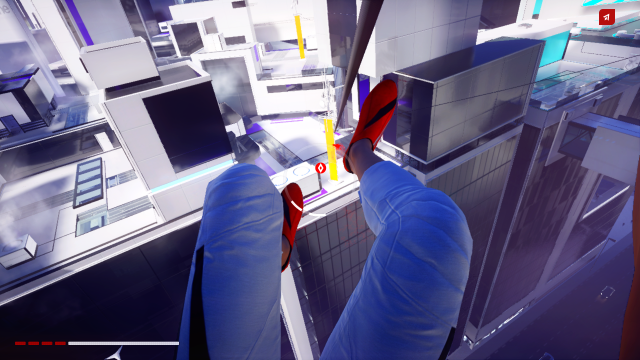
One of the main points on Catalyst’s manifesto is the invigoration of the Mirror’s Edge’s world and characters, since the first game’s approach to such areas was pretty minimal. I was quite baffled at EA and DICE’s treatment of Faith in Catalyst’s promotion leading up to launch; she’s got an iconic design, sure, but she’s not exactly a well of personality. She just really likes running and is sometimes forced by circumstance to act against the gigantic and corrupt forces-that-be. Not exactly the most original character concept. I’m reminded of the way Square Enix hails Final Fantasy XIII’s Lightning as a big, important character that everyone loves because They Say So.
Catalyst attempts to make us empathise with Faith through the introduction of an extra-tragic backstory and the implementation of third-person cutscenes so we get more of a physical idea of her emotions than what we can read in her hand movements. Unfortunately Faith’s contribution to most of these scenes is to run into a room, pout and perhaps shout a bit, and then run out of the room again. Faye Kingslee provides as compelling and emotive-a performance as could have been extracted from the script, but I just couldn’t find myself caring all that much about Faith beyond the fact that she’s obviously on the morally right side of the conflict. She’s just a bland, surly, generically “damaged” heroine without any character traits that set her apart.
The rest of the cast aren’t very inspiring, either. The leader of Black November justifies some horrible acts of terrorism with the most banal spouting of political science as if from a high school textbook. There’s a computer genius type that, you guessed it, isn’t too good with people, preferring the company of robots. The main villain of the story doesn’t evolve past “you underlings don’t know what’s best for you”, and even gets all excited about ordering your death because he’s upper class and you’re below him and oh boy we’ve all seen this villain a hundred times.
Mirror’s Edge Catalyst doesn’t say anything new. Yes, Mass Surveillance is scary. Yes, the inaction of the masses could be considered as a form of complicity with Big Brother. Yes, social immobility is bad. Most stories start with these concepts before running with them, but Catalyst is content to just keep beating you over the head with them, developing nothing original to say for its entire length.
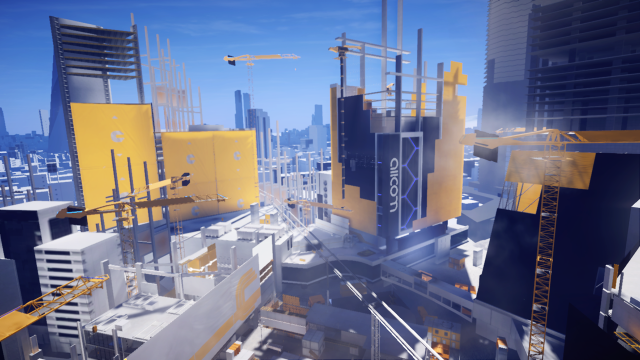
Even the dialogue is full of tired clichés. How many times have you heard “You know I run better alone”? I had to roll my eyes when one character asked what happened to a vastly changed area of town, and someone answered “K-Sec happened”. Catalyst is filled to the brim with insipid, flavourless dialogue and “twists” you’ll spot a mile away. The first time I saw one character, I immediately declared “there is an obvious twist involving this person”. Lo and behold, five hours later this was confirmed. I’d feel clever about it if it wasn’t such a glaringly easy development to guess. Not even Faith can summon the energy to react to the presumably life-shattering revelation.
The game doesn’t even seem to know how to wrap itself up right. The final sequence of the game isn’t a climactic battle with any of the antagonists. It’s a fight against two of the most difficult normal enemy types in the game before control is taken away from you a while Faith fights the villain in a cutscene. It’s a flat, disappointing note to end on for a game that’s supposed to be built on letting you control the interesting action.
Mirror’s Edge Catalyst feels rushed. The bland writing, the cookie-cutter plot, the re-used set pieces, and the thousands of niggling problems of pacing and encounter design all coalesce to hold back a game whose core mechanics are actually very fun. Perhaps with more time to iron out the problems of writing, world, and encounter design, Catalyst wouldn’t be the frustrating thing that it is. The game’s a muddy amalgam of original Mirror’s Edge mechanics saddled with tedious writing and tired open-world design decisions that’ve been driven into the ground over the past few years. Maybe Catalyst falls short of greatness because, unlike its forebear, it doesn’t dare to be different enough.
